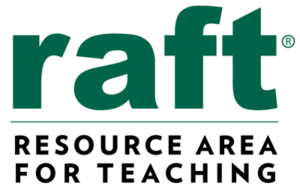Mathematical Practices: 1. Make sense of problems and persevere in solving them. 2. Reason abstractly and quantitatively. 3. Construct viable arguments and critique the reasoning of others. 4. Model with mathematics. 5. Use appropriate tools strategically. 6. Attend to precision. 7. Look for and make use of structure. 8. Look for and express regularity in repeated reasoning. ||Common Core Mathematics||Grade 4||Mathematical Practices|||4.G.2. Classify two-dimensional figures based on the presence or absence of parallel or perpendicular lines, or the presence or absence of angles of a specified size. Recognize right triangles as a category, and identify right triangles.||Common Core Mathematics||Grade 4||Geometry||Draw And Identify Lines And Angles, And Classify Shapes By Properties Of Their Lines And Angles|||Mathematical Practices: 1. Make sense of problems and persevere in solving them. 2. Reason abstractly and quantitatively. 3. Construct viable arguments and critique the reasoning of others. 4. Model with mathematics. 5. Use appropriate tools strategically. 6. Attend to precision. 7. Look for and make use of structure. 8. Look for and express regularity in repeated reasoning. ||Common Core Mathematics||Grade 5||Mathematical Practices|||5.MD.3. Recognize volume as an attribute of solid figures and understand concepts of volume measurement.||Common Core Mathematics||Grade 5||Measurement And Data||Geometric Measurement: Understand Concepts Of Volume And Relate Volume To Multiplication And To Addition|||5.MD.5. Relate volume to the operations of multiplication and addition and solve real world and mathematical problems involving volume.||Common Core Mathematics||Grade 5||Measurement And Data||Geometric Measurement: Understand Concepts Of Volume And Relate Volume To Multiplication And To Addition|||Mathematical Practices: 1. Make sense of problems and persevere in solving them. 2. Reason abstractly and quantitatively. 3. Construct viable arguments and critique the reasoning of others. 4. Model with mathematics. 5. Use appropriate tools strategically. 6. Attend to precision. 7. Look for and make use of structure. 8. Look for and express regularity in repeated reasoning. ||Common Core Mathematics||Grade 6||Mathematical Practices|||6.G.1. Find the area of right triangles, other triangles, special quadrilaterals, and polygons by composing into rectangles or decomposing into triangles and other shapes; apply these techniques in the context of solving real-world and mathematical problems.||Common Core Mathematics||Grade 6||Geometry||Solve Real-World And Mathematical Problems Involving Area, Surface Area, And Volume|||6.G.4. Represent three-dimensional figures using nets made up of rectangles and triangles, and use the nets to find the surface area of these figures. Apply these techniques in the context of solving real-world and mathematical problems.||Common Core Mathematics||Grade 6||Geometry||Solve Real-World And Mathematical Problems Involving Area, Surface Area, And Volume|||Mathematical Practices: 1. Make sense of problems and persevere in solving them. 2. Reason abstractly and quantitatively. 3. Construct viable arguments and critique the reasoning of others. 4. Model with mathematics. 5. Use appropriate tools strategically. 6. Attend to precision. 7. Look for and make use of structure. 8. Look for and express regularity in repeated reasoning. ||Common Core Mathematics||Grade 7||Mathematical Practices|||7.G.6. Solve real-world and mathematical problems involving area, volume and surface area of two- and three-dimensional objects composed of triangles, quadrilaterals, polygons, cubes, and right prisms.||Common Core Mathematics||Grade 7||Geometry||Solve Real-Life And Mathematical Problems Involving Angle Measure, Area, Surface Area, And Volume
